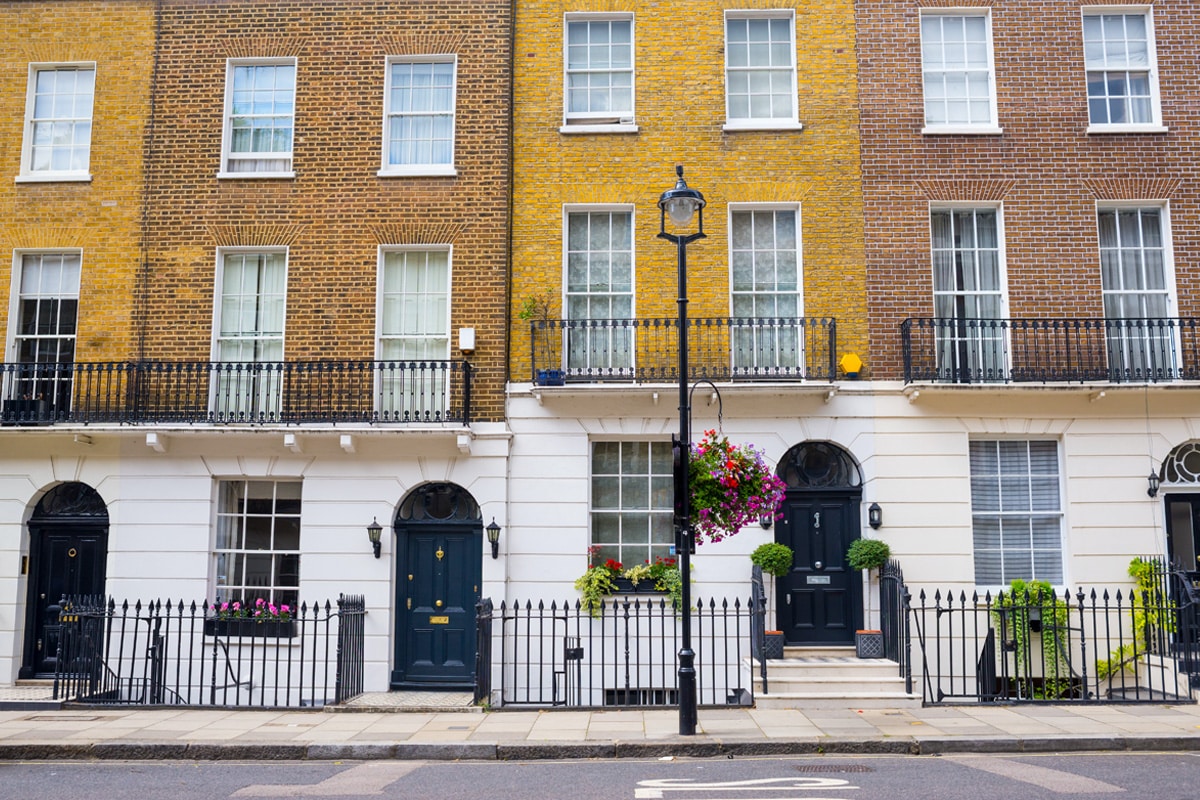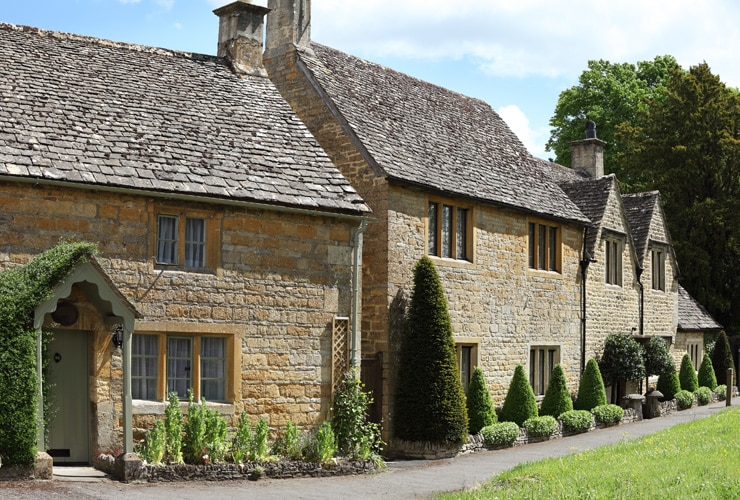Should You Buy a Grade 2 Listed Building? Advantages & Disadvantages
A listed building can be an exciting and rewarding property to own. But owning a listed building can also present many problems that can be costly and time-intensive to fix, requiring expert knowledge and trade skills. Listed buildings of any grade are not advisable to start with if you are looking for alternative property investments; they should be purchased with caution, and you should go into any listed building project with your eyes open on what might be ahead.
This guide focuses primarily on Grade 2 listed buildings, as they represent over 90% of all listed buildings in England and are the grade most property investors and homebuyers will encounter when building a property portfolio.
Here we look at what a listed building is and at the pros and cons of buying and owning one.
Article updated: October 2025
What is a Listed Building?
A listed building is
A building that is considered to be of special architectural or historic interest with legal protection.
The older a building is the more likely it is to be a listed building and considered a national importance.
Interestingly, many buildings built before 1700 which survive in their original condition are likely to be listed. Most buildings built between 1700 and 1850 are also likely to be listed.
Buildings built since 1945 are less likely to be listed as these are more common and represent most of the housing stock across the UK Buildings due to the house building boom in the early 20th century.
Listed status may be granted not only to buildings but to things such as battlefields, monuments, parks, gardens, telephone boxes, milestones, shipwrecks and even a 19th century urinal in Westminster or a fish-shaped collection box in Robin Hoods bay near Whitby.
Types of Listed Buildings
There are three types of listed buildings as identified by Historic England.
Grade I buildings are considered to be of exceptional interest. Only around 2.5% of all listed buildings are Grade I listed.
Grade II* buildings are particularly important buildings of more than special interest. 5.8% of listed buildings are Grade II* listed.
Grade II buildings are buildings of special interest. 91.7% of all listed buildings are Grade II listed.
How to find out if a building is listed: You can check whether a property is listed, and what listing it has, by searching the National Heritage List for England or the other relevant national lists of listed buildings.
How Many Listed Buildings are in the UK?
The United Kingdom protects approximately 466,000 listed buildings across its four nations (with over 80% of the total UK listed housing stock being in England), with each country maintaining its own listing system and heritage register:
- England: 379,845 listed buildings
- Scotland: 47,000+ listed buildings
- Wales: 30,000+ listed buildings
- Northern Ireland: 9,100 listed buildings
England's significantly larger number reflects both its greater population (with some of the fastest growing cities in the UK and the density of historic properties from various periods, from medieval structures through to Victorian industrial buildings. Whilst England, Wales, and Northern Ireland use the Grade I, II*, and II classification system, Scotland operates its own Categories A, B, and C listing structure, though the principles of protection remain similar across all four nations.

Access our selection of exclusive, high-yielding, buy-to-let investment property deals and a personal consultant to guide you through your options.
Why are Buildings Listed?
Listed buildings are usually listed to help prevent any inappropriate renovations or alterations that could detract from their architectural or historic interest. Listing a building brings it under the control of the planning system in that listed building consent is needed to make many changes to it.
Listed buildings status is not the same as a preservation order as changes may still be made to listed buildings subject to consent being granted.
Listed buildings are called listed because they are actually added to a list. In England the listed buildings list is the National Heritage List for England or NHLE, which is maintained by Historic England.

The Advantages of Owning a Listed Building
Owning a listed building can offer several advantages for homeowners and investors:
- Living in a listed building can offer a unique and special lifestyle due to its unique and special character. For example, living in a castle, a Tudor farmhouse or a historic Victorian Gothic house can be a unique living experience.
- Those who live in listed buildings often say that they very much feel part of history. They enjoy being part of the heritage of the nation by living in and conserving a listed building for the future.
- Listed buildings are very often in prime city and country locations, where many of the most expensive streets in London, Birmingham and Manchester have provided homes to the UK's elite and ultra-high-net-worth politicians and industry leaders of their age.
- Listed buildings may appreciate in value faster than other properties in the same area due to their very limited nature. The supply of listed buildings is inherently limited and demand has often been very popular for these unique homes, which pushes up values.

The Disadvantages of Owning a Listed Building
Owning a listed building can involve several disadvantages, however:
Renovation Restrictions
- You may not be able to make any changes, or very few changes to a listed building. Renovating, developing or extending a listed building may be difficult or impossible, so if your strategy is flipping homes, you may wish to start with simpler properties when starting out.
-
You are likely to need to obtain listed buildings consent (or LBC as it may be known) to make many changes to a listed building, where these are allowed at all.
Listed building works which require consent include but are not limited to: Work that alters the internal or external appearance of the building. Extensions. The removal of walls. The replacement of doors and windows. The alteration or removal of fireplaces and staircases. Changing the external colour scheme. Work to outbuildings and gardens/land. Demolishing all or part of a listed building. -
Whether work on a listed building requires listed building consent is not always a clear-cut matter. It may depend not only on what work is done but how it is done and the materials that are used. Work on a listed building may also require planning permission. This includes cases where work on a non-listed building would not require planning permission. Listed buildings are also sometimes within conservation areas where additional consents for any work require approval.
-
Listed building consent is applied for from the local planning authority. The council should have a conservation officer or similar who can advise on where consent is and is not needed and whether consent is likely to be granted.
Responsibilities
- Unauthorised work on a listed building may be a criminal offence.
- Owning a listed building comes with a legal responsibility to conserve and maintain it. Local authorities can issue a repairs notice under Section 115 of the Town and Country Planning Act 1971 if they consider the owner of a listed building is neglecting this responsibility. They can also make a compulsory purchase order in extreme cases.
-
Owners of listed buildings may also be liable for any unauthorised work that was done on the listed building before they actually owned it.
Higher Costs and Maintenance
- Listed buildings may require a lot of maintenance and repair. This is both due to their age and the nature of the materials and techniques that were originally used to build them.
-
Maintenance of a listed building and any work like renovation and extending (if allowed) will be more difficult and more expensive too. This is because specialist skills and specialist building materials may be required.
Challenges
- Insurance for listed buildings is generally harder to obtain. Insurance for listed buildings is also generally more expensive, due to the higher costs of repairing them. It's best to take advice from a specialist insurer or broker on the insurance implications of owning a listed building.
-
Listed buildings can be hard to sell if you wish to move, if the property has obvious problems or defects that could be expensive and time intensive to fix.
-
Listed buildings are often not very well suited to modern living. Listed buildings may have small, oddly shaped rooms with very low ceilings .... or huge, lofty rooms. They might have very poor insulation and poor energy efficiency (good luck getting an EPC with a C rating for old listed house). This makes them cold in winter and expensive to heat.
Frequently Asked Questions
Are Grade 2 Listed Buildings Harder to Sell?
Yes, Grade 2 listed buildings can be hard to sell unless they are in perfect condition. Many potential purchasers are deterred by renovation restrictions, higher insurance costs, and the responsibility of maintaining a historic building. However, this doesn't mean listed buildings are unsellable or poor investments. In desirable locations, well-maintained Grade 2 listed buildings can command prices 10-15% above similar non-listed properties as the right buyers will compete and pay a premium for uniqueness
Is It Harder to Get a Mortgage on a Listed Building?
Yes, securing a mortgage for a listed building is more complex and expensive than for standard properties because specialist mortgage lenders are required, and not all buyers can meet the larger deposit requirements (typically 25-40%). So if you are looking at how to raise capital for property investment you may wish to stick to more traditional standard homes that are easier to finance. Lenders may also require detailed structural surveys beyond standard valuations. Often conducted by chartered surveyors with conservation experience, adding £1,500-£3,000 to your purchase costs. Properties with known structural issues, extensive disrepair, or those requiring immediate major work may be refused finance entirely until remedial work is completed.
Do Grade 2 Listed Buildings Hold Their Value?
Generally yes. As time progresses, these buildings get older and more historic. Of course as long as they are maintained. If you have ever walked the famous Roman Walls of Chester or York, you will see the range of historic homes that stretch out across the cities, this history and these unique locations cannot be replaced, especially by suburban new build homes or city centre apartments. Because of this, Grade 2 listed buildings can appreciate faster than non-listed properties in comparable locations and can make an interesting buy to let investment property for experienced property owners. This is especially true in historic market towns and cities where space is at a premium and homes are no longer able to be built in these conservation areas.
What Are You Not Allowed to Do to a Listed Building?
Without listed building consent, you cannot undertake any work that affects the building's special architectural or historic character. Conservation officers interpret this broadly, and the scope of restrictions often surprises new owners. The fundamental principle is that alterations must not damage historic fabric and should ideally be reversible.
Works that always require listed building consent include:
- Demolition: Total or partial demolition of any part of the structure, including internal walls, chimney stacks, or outbuildings within the curtilage
- Windows and doors: Replacing, altering, or installing new windows or doors, even with identical materials and design. Installing UPVC double glazing is typically refused, though secondary glazing may be permitted
- External changes: Painting previously unpainted brickwork, rendering masonry, changing exterior colours, or applying modern finishes that alter the building's appearance
- Original features: Removing or altering fireplaces, staircases, decorative mouldings, ceiling roses, cornices, panelling, historic flooring, skirting boards, dado rails, or picture rails
- Structural alterations: Removing chimney breasts, knocking through walls, changing room layouts, or modifications affecting load-bearing elements
- Roof works: Changing roof materials, altering roof structure or timbers, or switching to different thatch types. Standard repairs using matching materials typically don't require consent
- Extensions and additions: Building extensions, porches, conservatories, or any structure attached to the listed building or curtilage buildings
- Modern installations: Adding solar panels, wind turbines, satellite dishes, or external aerials. If approved, these must be reversible and not damage historic fabric
- Insulation and services: Installing new insulation to floors, walls or ceilings, fitting modern heating systems, or altering ventilation where it affects historic fabric
- Surface treatments: Masonry cleaning (which can cause irreversible erosion), repointing with inappropriate mortar, or painting interior surfaces where historic finishes exist
- Exposing features: Stripping plaster to expose brickwork or timbers, or removing later additions to reveal earlier features
- Boundary alterations: Changes to historic walls, fences, gates, or any structures within the property's curtilage that affect the setting
- Change of use: Converting the building to a different use (residential to commercial, single dwelling to HMO) where physical alterations are required
Because every listed building is unique, what requires consent varies case by case depending on the building's age, rarity, architectural merit, and specific features that contribute to its special interest. When in doubt, always consult your local authority's conservation officer before undertaking any work. Early discussions can prevent costly mistakes and help identify solutions that preserve the building's character whilst meeting your needs as the property owner.
Can You Rent Out a Grade 2 Listed Building?
Yes, you can rent out Grade 2 listed buildings as standard residential tenancies, however you maybe more limited with other property strategies like HMOs, or holiday lets due to local conservation and planning requirements. Your tenancy agreements should explicitly prohibit tenants from making any alterations without your written consent, as you remain legally responsible for preventing unauthorised work even when the property is occupied by tenants. Converting listed buildings to HMOs presents additional challenges because mandatory safety features like fire doors, escape windows, and compartmentalisation may require listed building consent if they affect historic fabric or original features.
Are There Grants Available for Listed Building Repairs?
Yes, several grant schemes exist for listed building repairs, though competition is intense and funding rarely covers the full cost of works. Historic England's Heritage at Risk programme provides grants for buildings in serious disrepair, prioritising Grade I and II* properties facing structural failure or extensive decay. On occasion local councils operate conservation area grants or listed building repair schemes, particularly in areas with concentrations of historic properties, though these are increasingly rare due to budget pressures. The Architectural Heritage Fund offers some grants, support and low-interest loans to building preservation trusts and community groups rescuing historic buildings.
If your listed building has been vacant long-term, empty homes grants may also be available from your local council, which can sometimes be combined with conservation funding. We've compiled comprehensive guides to empty home grants across England:
- London empty homes grants - covering all 32 London boroughs
- North West empty homes grants - including Manchester, Liverpool, Lancashire, and Cumbria
- West Midlands empty homes grants - covering Birmingham, Coventry, Wolverhampton, and surrounding areas
- East Midlands empty homes grants - including Nottingham, Derby, Leicester, and Lincolnshire
